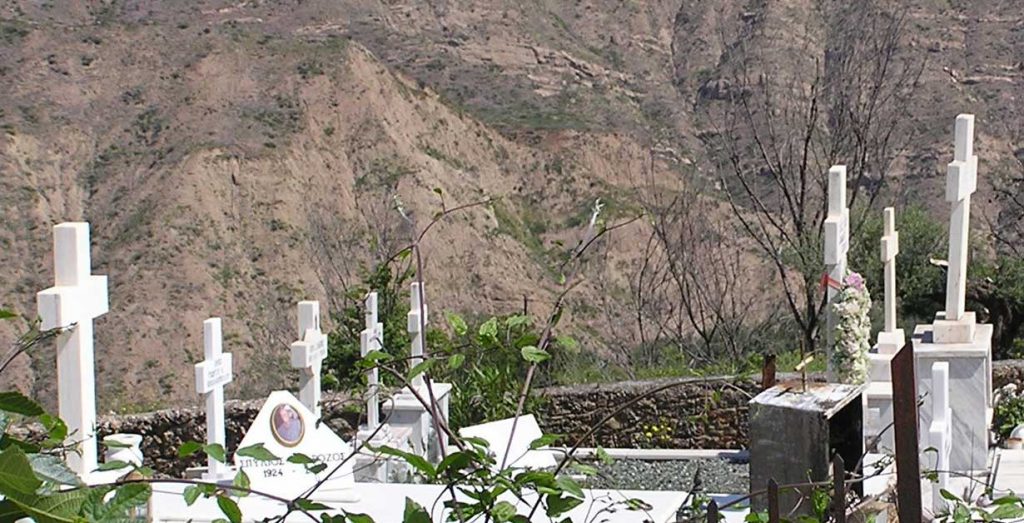
Finding the sublime in a city’s forgotten spaces: Part 2
We’ve heard many people lament the ‘bubble-wrapping’ of today’s children. But neurologically, what happens when kids aren’t given the room to make mistakes? Here, Helen Armstrong argues for the ‘freedom to roam’ in marginalised urban spaces.
Not all children enjoy the rough and tumble of playing with local kids in their neighbourhoods. In old European cities, children tend to live in apartments on busy streets and squares. In these cities, where does a child find marginal places to explore alone and unnoticed? The Berlin writer, Walter Benjamin, speaks of such childhood places as the fertile ground that nourished his adult writings about cities. In his forties, after a tumultuous period as a Jewish intellectual during the 1920s in Berlin, he began to write vignettes about his childhood in an attempt to understand how childhood play, particularly with discarded objects or in abject places, is liberating.
…It was a prophetic corner. For just as there are plants that are said to confer the power to see into the future, so there are places that possess such a virtue. For the most part, they are deserted places – treetops that lean against walls, blind alleys or front entries where no one ever stops. In such places, it seems that all that lies in store for us has become the past.
The young Walter grew up in an area of wealthy Jewish families in the West End of Berlin near the Tiergarten and the old Zoo. Until he was ten, he had private tuition, after which he entered formal school, but he had fragile health and hated the noisy crowding and the harsh punitive environment.
In contrast, the rundown part of the zoo was quiet. He felt that he could easily have passed ‘long sweet days there’ endlessly gazing into the dark pond to catch a glimpse of the otter. Here the young boy mused that the dark impenetrable pool was possibly where all the water of the city collected for his ‘sacred animal of the rainwater’. This place, so strangely indeterminate and a little frightening, was where a melancholy child could wonder about his world and what lies beneath the city.
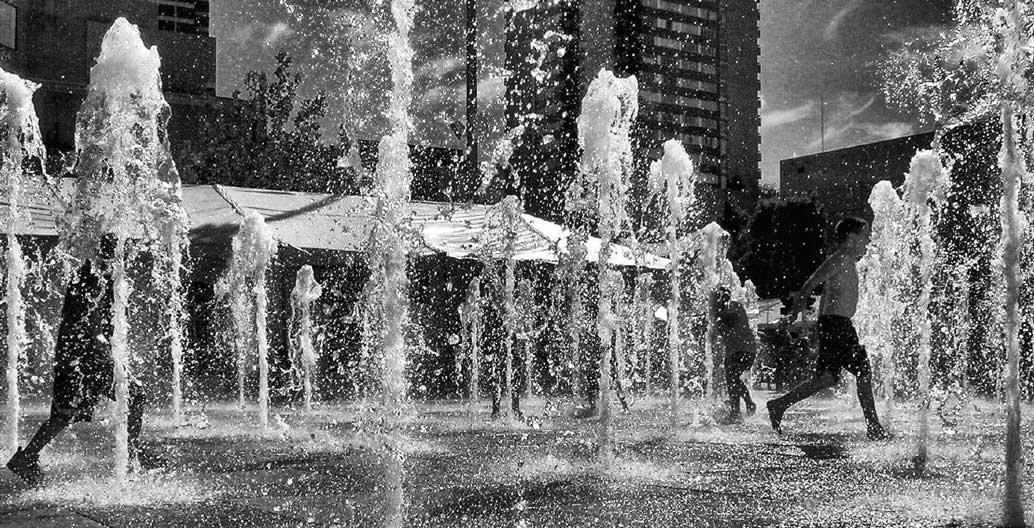
An alternative children's playground in summer. Image courtesy of the Bundesarchiv.

Children playing in Jüdenhof, Berlin (1930). Image courtesy of the Bundesarchiv.
Migrant children in Australian open wastelands
In contrast to the moody light of European cities, marginal lands in Australia are bleached and dry. These places are in stark contrast to the landscapes remembered by certain people who have migrated to Australia. In the 1930s the migrants who came from the Mediterranean often settled in country towns. Their children had a freedom in the new landscape that they would not have experienced in their parents’ home country.
A child in a Greek village would be expected to work after school in vineyards; herding goats, collecting water from wells and doing household chores. For Panygiotis, who grew up in a mountain village in the Peloponnesus, there was no such thing as ‘discarded’ land because every part of the landscape was productive. Panygiotis was expected to hurry home after school to attend to the vegetable beds, to rake out the chicken sheds and undertake various other chores and responsibilities. The only time the children in his village could play was after Sunday mass and the only area for imaginative play was an apparent unkempt space: the graveyard beside the village church. During the Greek civil war, the children would range over the untidy grave yard, playing Royalists and Partisans until hunger took them home for the evening meal.
Kiriaki, a Greek-Australian who grew up in an Australian country town in the 1960s, had a relatively unrestricted childhood – provided she looked after her younger siblings. For the children of migrants, Australia’s marginal lands and abandoned places allowed for the same imaginative richness and skill development as they did for Anglo-Australian children. Playing after school, she describes the joy of inventing games in an abandoned vintage car on an unkempt block of land nearby.
…It was the car that took us into the land of our imaginings. It invited us to clamber onto its running board and jump on its cracked leather seats, smelling of baking horsehair and dust; to fight over who got to ‘drive’ by energetically twisting the steering wheel left and right and wiggling the gear stick and suddenly we were somewhere else, driving through a magical enchantment…
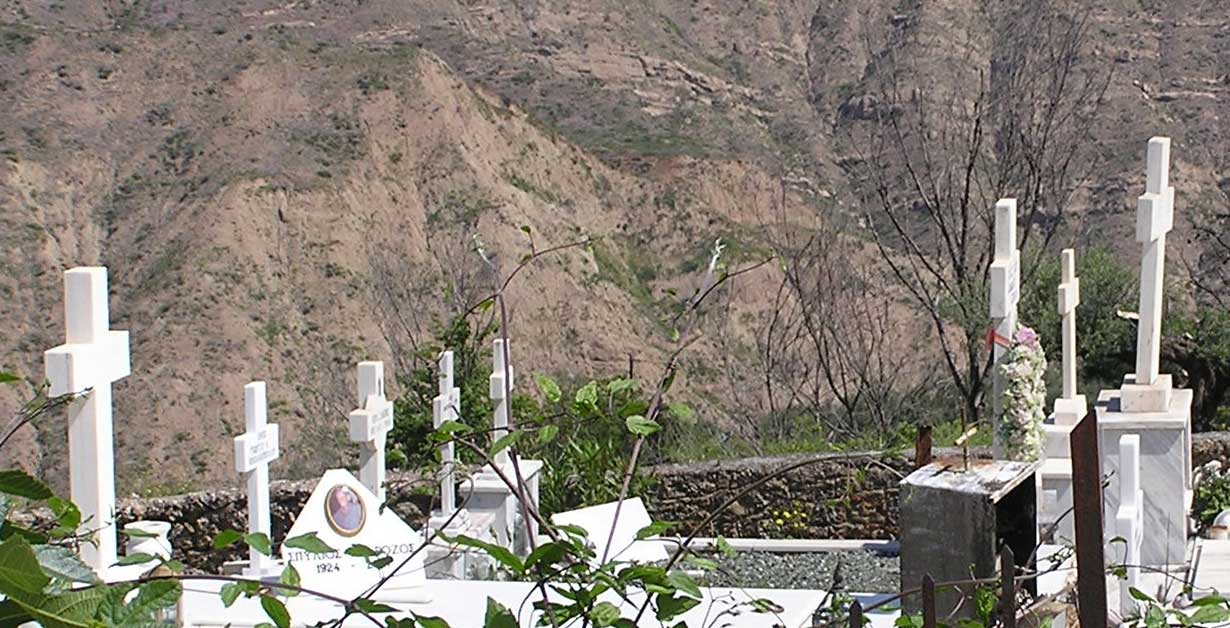
Panygiotis' local cemetery.
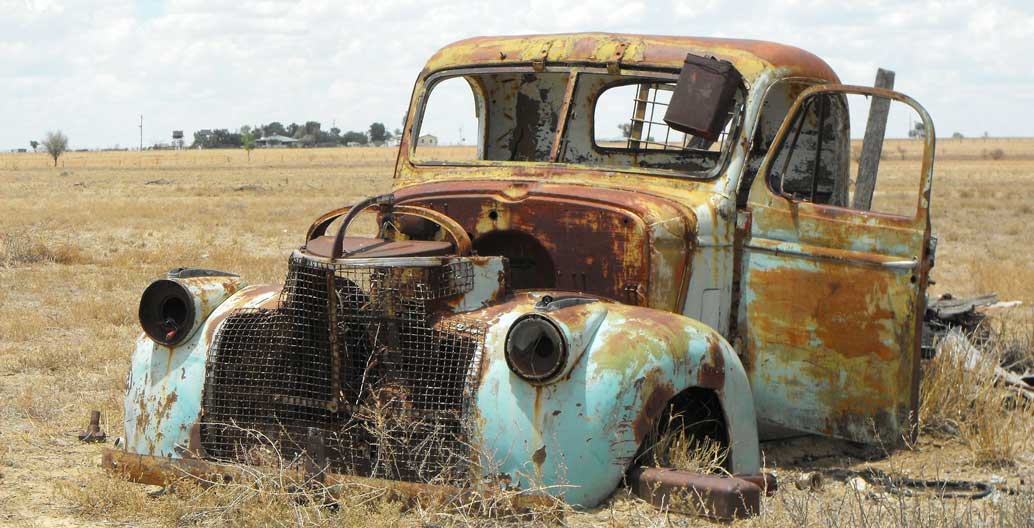
An abandoned car in rural Australia.
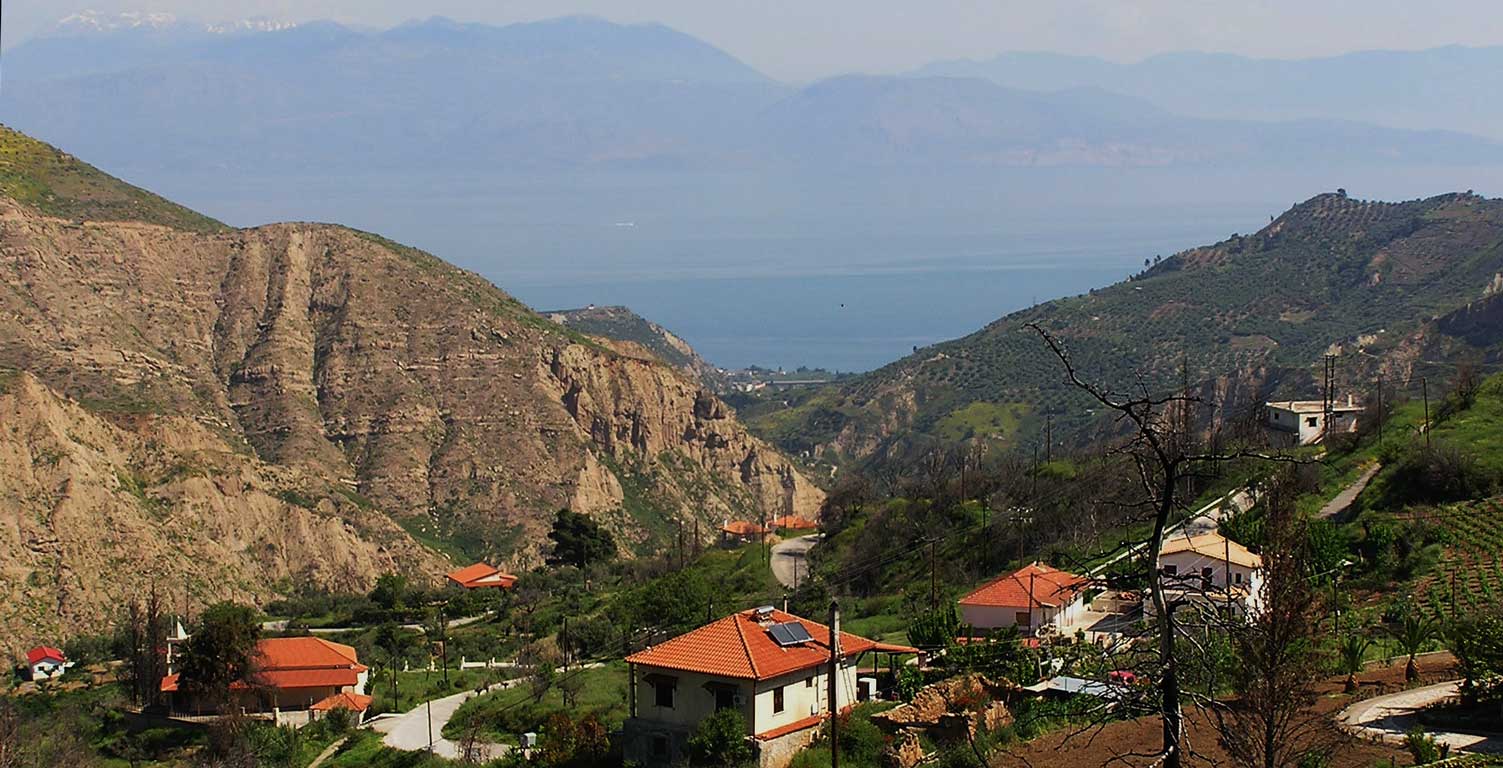
Panygiotis' village.
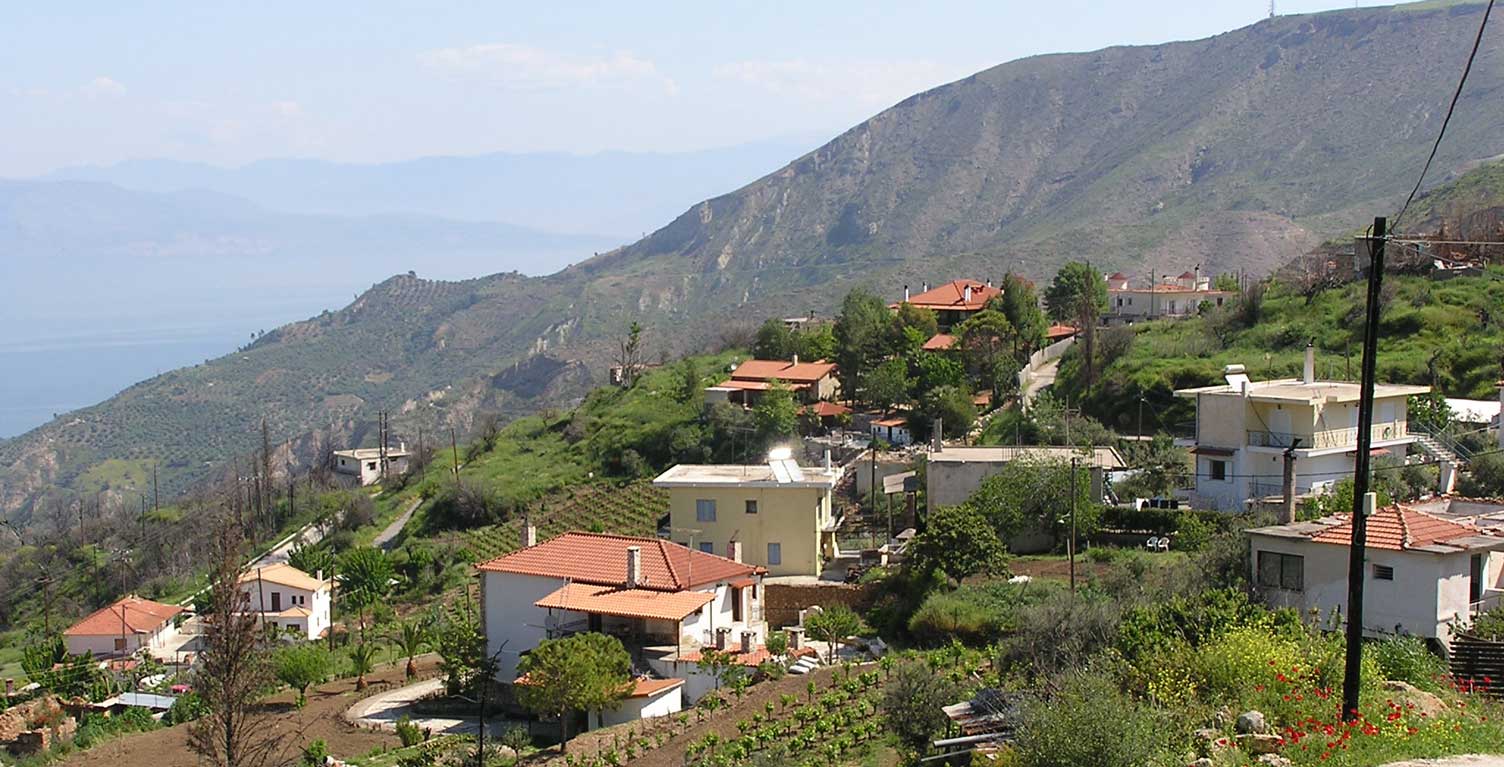
The steeped agricultural practices of the Peloponnesus villages.
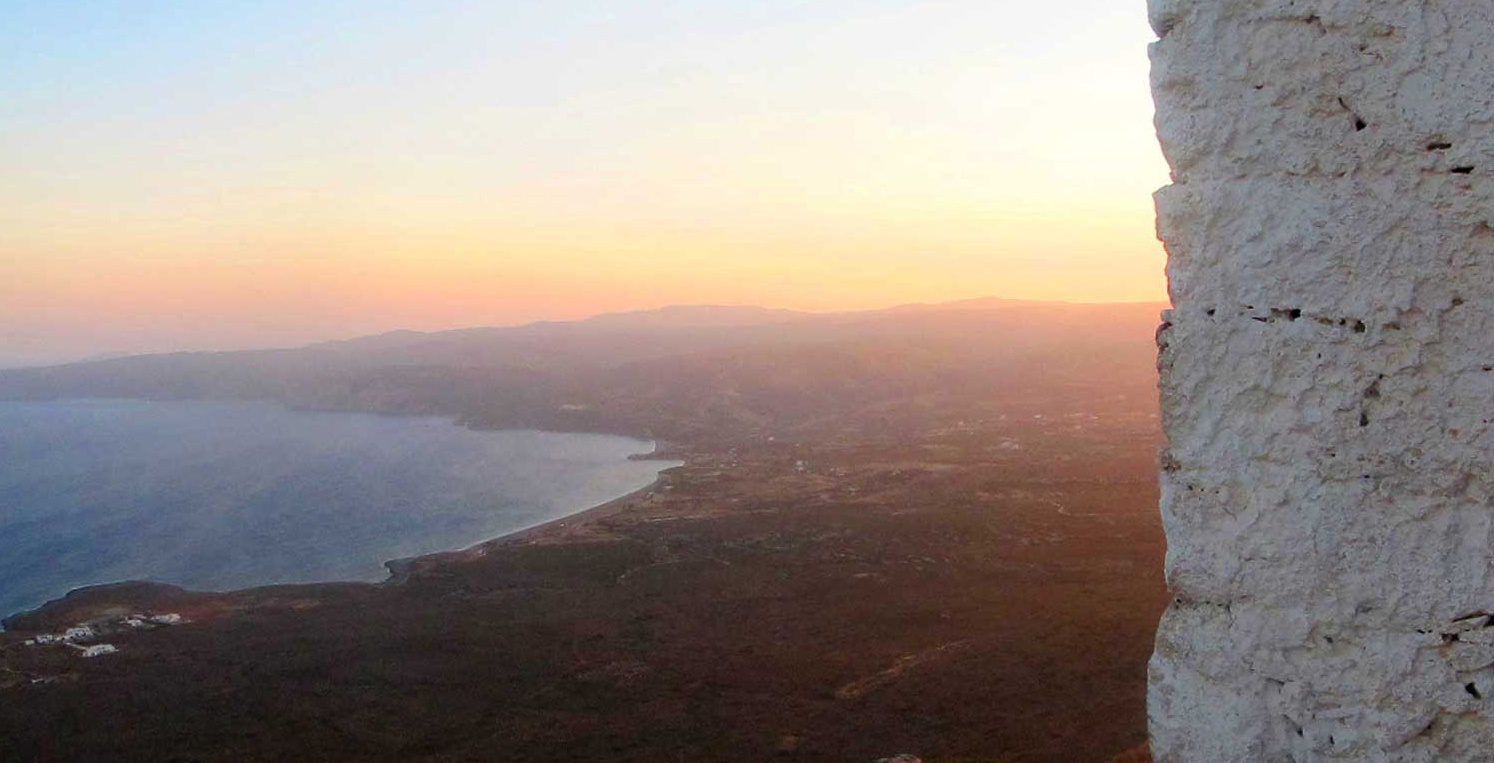
A vision of washed Greek light.
This old car on an abandoned block of land provided a place for these children to play, free of self-consciousness about their cultural difference and how it would be perceived by the mainstream Australians. As Kiriaki muses… despite our shorts and thongs, our peeling sunburn, noisome with the childhood stink of sweat and dirt, we were as alien to that place [Greece] as we were to the one we had been born into. With our olive skin and dark hair, our skinny, fatless bodies, we looked different…
Childhood Landscapes in Tropical Jungles
Outside Penang in Malaysia, well-to-do families spend the summer in the cooler jungle-covered hills. In the early 1960s, small enclaves of summer houses, built along the contours, were home to childhood ‘gangs’ who bonded over the summer holidays. Oi, a landscape architect in Australia, and her brothers and sisters made up one of these gangs.
In contrast to the dry Australian grasslands on the edge of towns, Oi remembers the neglected tropical jungle was moist but not dark because the exceptionally tall keruing trees allowed light to penetrate down to the ground.
Sometimes vines with fleshy leaves attached themselves to the trunks, creating little pockets for orchids and ferns. High up in this canopy, there were sounds of different birds as well as the squeals of the dusky leaf monkeys and occasionally the children would see the giant Malay tree squirrel. Oi remembers how the Areca palms and tree ferns grew under the keruing trees; their whorl of spreading fronds providing shade and moisture. On the ground were scrambling vines and every so often the beautiful blue flower of the Black Lily could be seen in clumps of knee-high leaves.
Although the children were unaware of this, in the late 19th century Indian prisoners built a labyrinth of narrow unkempt paths to connect the different summer bungalows. By the 1960s when Oi was growing up, these neglected walks crossed over small streams flowing down the slope with the jungle pressing in. Occasionally along the path there would be an indeterminate track leading deeper into the jungle. Such tracks were the no-man’s-lands that Oi as part of the intrepid gang of eight children, the Green Lane Gang, explored in order to hunt tigers – even though the Malay Tiger was an endangered species already hiding in the protection of the National Park.
The stories of children in Australian country towns, or Malaysian hills, as well as children whose parents have migrated from other countries, reveal the same desire to explore marginal places away from adults. When a child is alone and quietly dreaming, these places helped children understand themselves; whereas in groups, the places gave children a sense of adventure heightening their intrepidness. In all countries, these landscapes stimulated imagination in a myriad of ways.
Childhood Landscapes Today
Children today do not have the freedom to explore marginal places alone. They are rarely free from adult supervision and so do not learn to negotiate risk, such as playing in an abandoned old car. The tracks and the jungle still exist on the Penang Hills, but one wonders whether the children who holiday today are allowed to go exploring; not through fear of tigers but because of parental anxiety about strangers.
This is explored in Richard Louv’s book, Last Child in the Woods, where he mourns for today’s children who are prevented from enjoying unrestricted outdoor play in nature because of parental fear of strangers and dangers.
This fear is not supported by statistics but is fuelled by media. His statistics cited that by 2005 the rates of violent crimes against young people had fallen well below 1975 levels. He suggests that “stranger danger” and the abduction of children is a myth. In his research of 3000 children in United States, he found that playing in nature whether pristine or marginal was perceived by children and parents as … unproductive, off-limits, alien, dangerous…. He points out that children can tell you all about global warming and the hole in the ozone layer but few can talk about walking alone in the bush or lying in the rough grass to watch the clouds move.
Such rough and tumble play is now seen as vandalism and as Louv points out, there has been a form of criminalisation of unsupervised outdoor childhood play, particularly in new developments where building cubbies or forts or tree-houses is outlawed by covenants. The by-laws prevent children playing naturally in surrounding open space, so they end up indoors with computer games or swinging and climbing in safely controlled designed playgrounds.
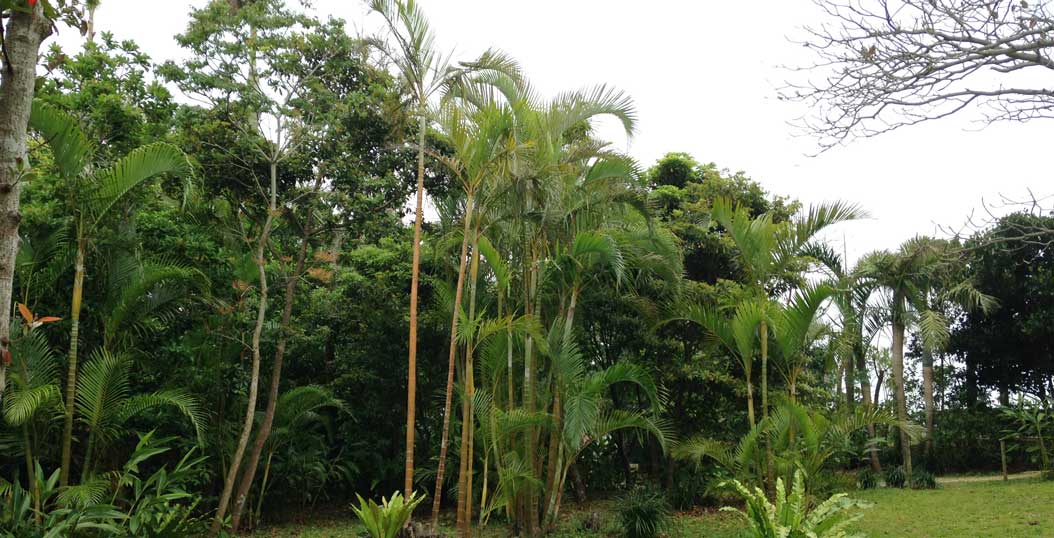
Areca palms peeking out of the rainforest. Photo: Soramimi
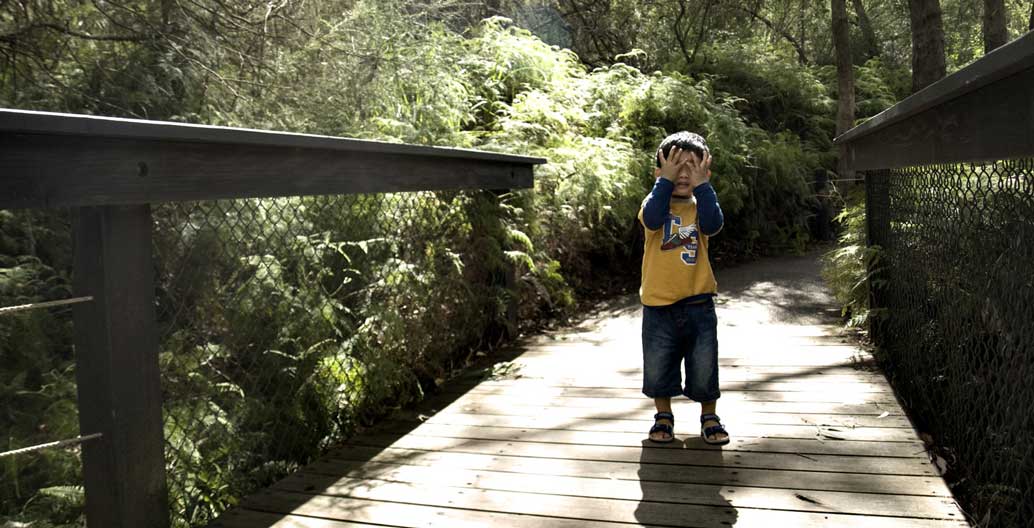
A child taking a moment to pause in a temperate rainforest.
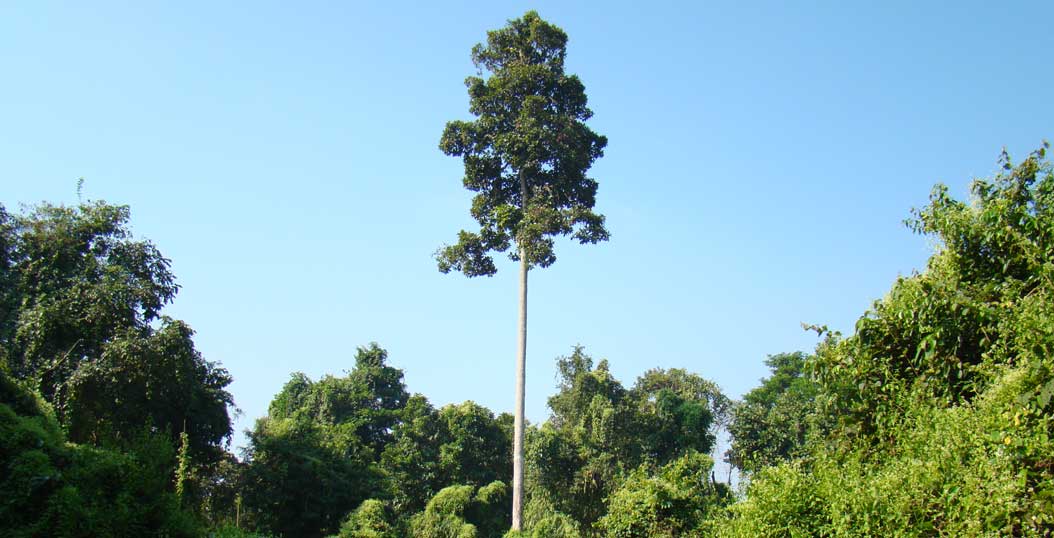
A keruing tree. Photo: Macaca77
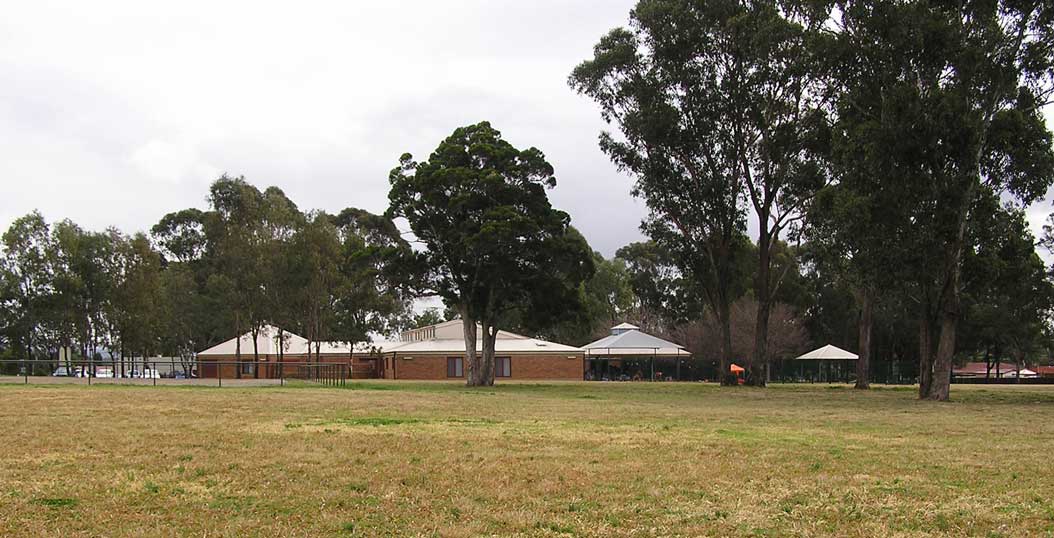
An after school centre fenced behind quite open fields.
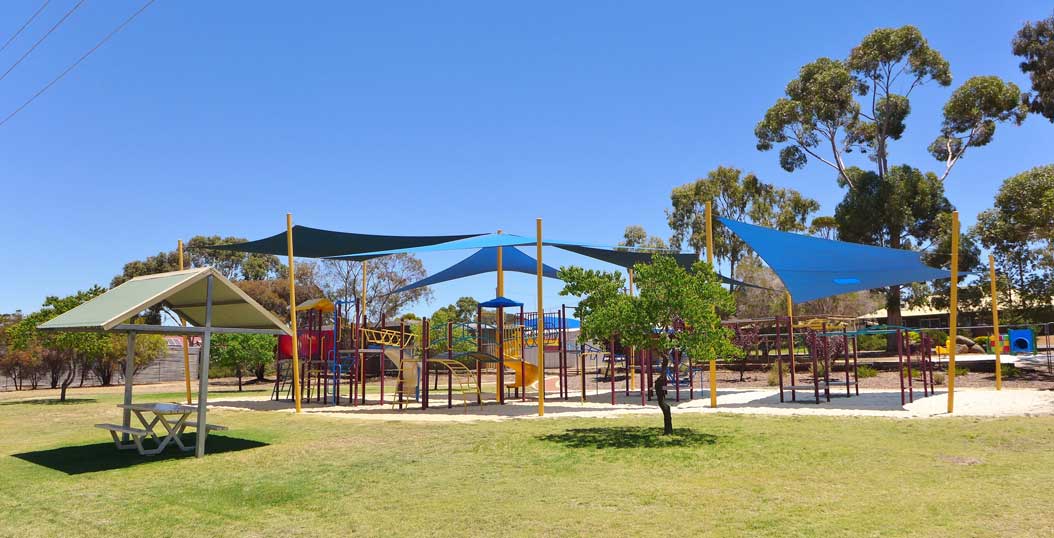
A modern playground in Pingelly, Western Australia.
The ‘Eighth Intelligence’ in Children
Louv suggests that there is an ‘eighth intelligence’ in children that is only developed by contact with nature. This ‘eighth intelligence’ is enhanced by a particular type of creativity that occurs in urban wilds where spaces are rich in loose parts – abandoned objects, rusting metal, brick rubble – ideal for imaginative play. Louise Chawla, an environmental psychologist, suggests that for some children the experience of this kind of play is “so intense that it burns itself into memory to animate adult life”. But apart from the role these marginal landscapes play in nurturing creativity in children, there are bigger societal advantages when children are able to play in urban wilds.
The US anthropologist, Wilkie, working with a village community in Argentina in the 1970s-80s, showed that children who were allowed to explore and roam in their childhood became resilient adults who enjoyed dynamic engagements with places, both urban and natural. In contrast, those children who were raised in a controlled manner with restrictions and supervised play tended to become adults who did not enjoy natural environments and felt unsafe in public places unless they were highly controlled. What does this herald for public space in our cities of the future?
Some colleagues and I did a recent study in Western Sydney looking at the use of parks. When we spoke to some children who lived in the area, we found that the children did not use their local parks because they were not allowed to go beyond their gardens unless accompanied by a parent.
Many children spend their playtime engaged in craft activities at after school care. The atmosphere in these centres is pleasant but the children can only play within the centre’s supervised play areas; access to parks and open space being prevented by high fences and locked gates. Opportunities for unsupervised play are limited as children are bussed from school to the centre, and are collected a few hours later by parents in cars.
This is the over-programmed life of today’s children, where the digital world is the main source of adventure. The child of today has grandparents who remember childhood as rich in sensory excitement, activity, diversity and challenge. One wonders what childhood memories will be in landscapes which are losing accessibility, diversity and intimacy to be replaced with increasingly programmed and uniform places.
The details in the memories of childhood places recalled here suggest that unsupervised places were very important. There may have been some disturbing places but the freedom to roam and experiment has produced a kind of resiliency in adulthood. How will the lack of freedom affect children of today? Accompanied by adults, they can enjoy the orchestrated play associated with today’s spectacle city, but how will they learn to roam and wander? Where will they learn the skills to negotiate all that is strange and disturbing? There are important treasures for our children in the various marginal landscapes that are sadly disappearing from our cities.
––
Dr Helen Armstrong was the Inaugural Professor of Landscape Architecture at Queensland University of Technology 1997-2003 and now is Professor-Emeritus. She has a long history as a practicing landscape architect, Adjunct-Professor, former Centre for Cultural Research. She has been a visiting scholar at numerous overseas universities and her work is widely published. Her particular interest in marginal urban landscapes has resulted in new perceptions of landscape in the context of post-urbanism and the book, Marginal Landscapes.
This is the second and final extract of the book, available in full at iTunes


